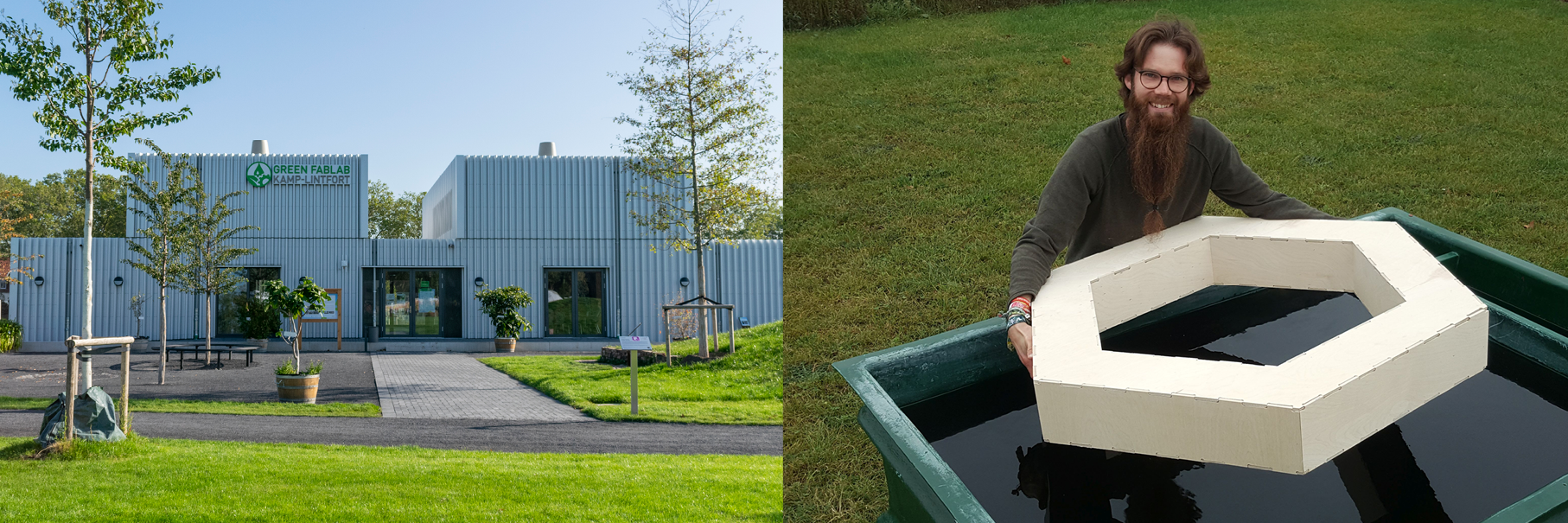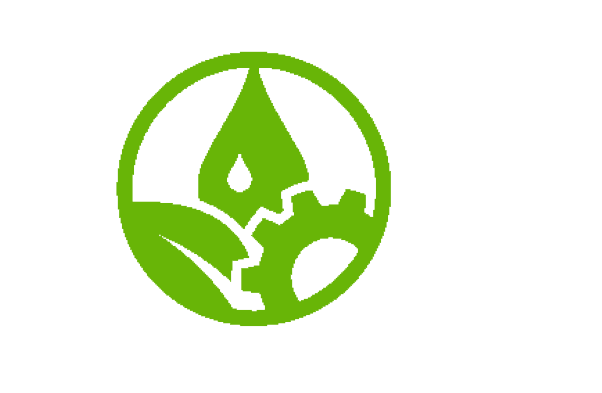Green FabLab and NABU cooperate in producing floating islands
Floating islands consist of aquatic plants that can enrich and improve the ecosystem. In a cooperation between Rhine-Waal University and NABU-Naturschutzstation Niederrhein, such islands are to be built from sustainable, durable materials using digital fabrication. The Green FabLab in Kamp-Lintfort invites pupils to construct, plant and launch them.
 Hannes Jaschinski, (Scientific Assistant, Green FabLab) testing the prototype on the Green FabLab premises
Hannes Jaschinski, (Scientific Assistant, Green FabLab) testing the prototype on the Green FabLab premises
Nutrient accumulations in stagnant or slowly flowing waters (eutrophication) are often caused by humans and lead to increasing ecological problems. Algae and odour formation as well as lack of oxygen are the consequences. This does not only destroy the habitats of many animals living at and in the water, but also leads to a limited use of the affected waters by humans. Among the most polluting nutrients are nitrogen, phosphate and organic materials.
Floating islands could be a solution
So-called floating islands can help to fight the consequences of increasing nutrient input. By means of suitable water plants, the upper part of the islands can become a living or breeding place for birds, frogs, beetles, dragonflies and other animals. The roots could be used as habitat by fish or other small animals living under water. In addition, they can help to absorb the excess supply of nutrients such as nitrogen and phosphate, and organic materials below the water surface. In this way, the islands not only serve to beautify rivers and lakes, but also enrich and improve the ecosystem. In a cooperation with the NABU-Naturschutzstation Niederrhein, the islands are to be produced as part of a school project week under the direction of Professor Dr Kai Jörg Tiedemann, Professor of Ecology and Environment.
Production in the Green FabLab
With the help of digital manufacturing, a total of 10 floating islands measuring around two square meters will be produced using sustainable, durable and local materials. Lark wood will be used as the building material, as it is abundant in the region and offers the best natural conditions for long-term use in the water. The wood will be treated with root tar to protect it from rapid decay. In order for the islands to float, their wooden walls have a cavity that will be filled with foam glass gravel as a buoyancy body. The "plant pontoons" will then be covered with a natural fibre mat which serves as a floor for planting. The prototype for these islands has already been produced in the FabLab in Kamp-Lintfort.
Planting in one of the University’s laboratories
The islands are to be planted in a laboratory of the Faculty of Technology and Bionics on the Kleve Campus. NABU has planned to use native plant species that originate from a nearby nature reserve and are typical for the transition zone. These include, in particular, the water swamp cress, the cattail, the water mint, the flutter bint, the blood loosestrife, the reddish water speedwell and the swamp forget-me-not. These plants will then be reproduced to find out which of them grow particularly well. "The project is an excellent example of how interdisciplinary the university works and of how the Green FabLab, as a zdi student laboratory, communicates green technologies in extracurricular education. We can benefit enormously from the cooperation with NABU and its knowledge," says Professor Tiedemann. NABU has submitted an application for the project. The approval is still pending.
Use at the front door
The use of the floating islands is subject to approval by the relevant authorities. It is planned to anchor them in the Spoykanal in Kleve in front of the university. Being a stagnant water and due to its strong eutrophication, the channel is particularly well suited for the project. Water quality and species richness will then be systematically recorded with an annually conducted and documented scientific monitoring. Thus it can be tested to what extent the islands can ecologically upgrade the channel.
This project is supported from the European Union’s Regional Development Fund (ERDF)


